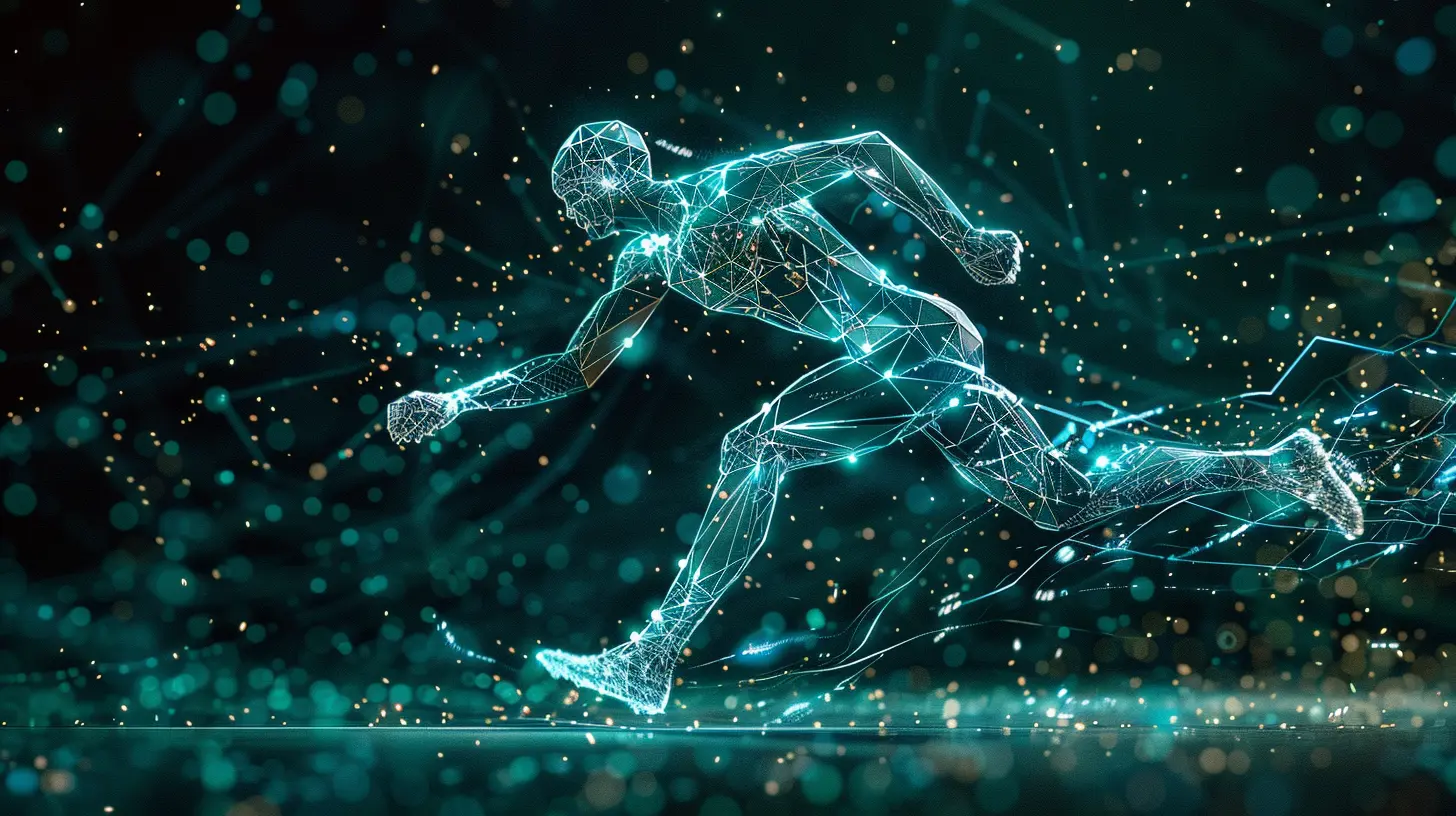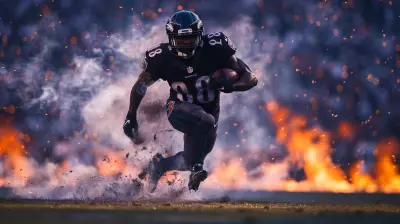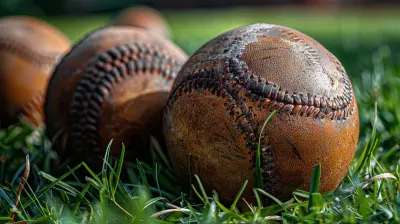How Biomechanics is Shaping the Next Generation of Sports Stars
10 May 2025
In the ever-evolving world of sports, athletes are constantly looking for ways to enhance their performance. Whether it's shaving milliseconds off a sprint time or improving the accuracy of a basketball shot, the pursuit of excellence never ends. But while natural talent and rigorous training have long been the primary drivers of athletic success, there's now a new player in the game—biomechanics.
Biomechanics might sound like something out of a sci-fi movie, but it's very real and very relevant. It’s a field that's helping athletes unlock their full potential by analyzing how the human body moves and functions. In the simplest terms, biomechanics is the study of movement and physics applied to the human body. Imagine science meets sports, and together they create the ultimate athlete.

What Is Biomechanics?
Before diving into how biomechanics is shaping the next generation of sports stars, let's get a clearer picture of what biomechanics is all about.Biomechanics breaks down the mechanics of the body’s movement. It's about understanding how muscles, bones, tendons, and ligaments work together to produce movement. By analyzing these movements, scientists and coaches can pinpoint exactly where an athlete might be losing efficiency or where they can make small adjustments to improve their performance.
Think of it like this: every time you throw a baseball, kick a soccer ball, or even jump for a rebound, you're leveraging physics. The angles at which your limbs move, the force you exert, and the way you balance all play a part in how successful you’ll be. Biomechanics is the tool that helps athletes and coaches understand those movements in a detailed and scientific way.

The Role of Technology in Biomechanics
If you're picturing a bunch of scientists in lab coats standing around athletes with clipboards, you're not far off—but there’s more to it than that. Today, technology plays a huge role in biomechanics, making it accessible and practical for athletes across all sports.Motion Capture Systems
One of the most popular tools in biomechanics is motion capture technology. If you've ever seen behind-the-scenes footage of a video game or movie production, you’ve probably seen actors wearing those funky suits covered in small dots. Those dots are sensors used to track movement in three dimensions.In sports, similar technology is used to analyze an athlete's movement in real-time. By capturing every nuance of how a player moves, coaches and trainers can identify inefficiencies or areas for improvement. It’s like watching an instant replay, but instead of focusing on the outcome, you’re breaking down every little detail to ensure that every movement is maximized for performance.
Wearable Tech
Wearable technology has also revolutionized biomechanics. Devices like smartwatches, heart rate monitors, and even specialized shoes are now equipped with sensors that track everything from an athlete's speed and distance to their body’s biomechanics. These devices allow athletes and their coaches to gather data in real-time, whether they’re on the field, in the gym, or even recovering at home.For example, a runner might use a wearable device that tracks their foot strike pattern, stride length, and even the angle of their knee at different points in their stride. By analyzing this data, they can make subtle tweaks to their form that could ultimately lead to faster times and fewer injuries.
Force Plates
Another tool commonly used in biomechanics is the force plate. These devices measure the force an athlete exerts when they jump, sprint, or change direction. By analyzing how much force is generated and how it's distributed, coaches can adapt training programs to help athletes become more explosive, balanced, or efficient.
How Biomechanics is Revolutionizing Training
Gone are the days when training was solely about running laps or lifting weights. Biomechanics has added a whole new layer to the way athletes prepare for competition.Personalized Training Plans
One of the most significant advantages of biomechanics is its ability to create highly personalized training plans. Instead of using a one-size-fits-all approach, biomechanics allows coaches to tailor training programs to each athlete’s specific needs.For example, two basketball players might have completely different shooting forms. Instead of forcing both players to adopt an identical shooting technique, a coach armed with biomechanical data can help each player improve their form based on their individual strengths and weaknesses. This allows athletes to play to their strengths while still working on areas of improvement.
Injury Prevention
Injuries are an unfortunate reality in sports, but biomechanics is helping reduce their frequency and severity. By analyzing how athletes move, biomechanics can identify patterns that lead to injuries, such as poor posture, incorrect form, or imbalances in muscle strength.For example, a soccer player who consistently lands awkwardly after a jump might be more prone to knee injuries. By identifying this pattern early, a biomechanist can recommend corrective exercises or adjustments to their technique, potentially saving the athlete from a serious injury down the line.
Recovery and Rehabilitation
Biomechanics isn't just useful for preventing injuries—it also plays a crucial role in helping athletes recover from them. By understanding an athlete's movement patterns before and after an injury, trainers can develop more effective rehab programs. This ensures that athletes not only recover fully but also come back stronger and more resilient.In fact, many athletes now use biomechanics throughout their rehabilitation process to track their progress. By continually measuring things like range of motion, muscle activation, and joint stability, athletes and trainers can make data-driven decisions about when it's safe to return to play.

Enhancing Performance Through Biomechanics
At the end of the day, athletes are always looking for ways to improve their performance. Whether it's running faster, jumping higher, or throwing farther, biomechanics offers a scientific approach to achieving these goals.Perfecting Technique
One of the most obvious ways biomechanics improves performance is by helping athletes perfect their technique. Whether it’s a sprinter's start, a golfer's swing, or a swimmer's stroke, biomechanics allows athletes to fine-tune their technique to be as efficient and powerful as possible.For instance, in swimming, even small changes in hand position or body angle can drastically impact speed. By studying underwater footage and analyzing the forces at play, biomechanists can help swimmers make tiny adjustments that shave valuable seconds off their times.
Increasing Efficiency
Efficiency is key in any sport. The more efficient an athlete is, the less energy they waste and the longer they can sustain peak performance. Biomechanics helps athletes identify areas where they might be wasting energy and offers solutions to correct the issue.Take running, for example. Many runners unknowingly waste energy by overstriding or inefficiently using their arms. By analyzing their running form, biomechanists can help them make adjustments that allow them to run more efficiently, ultimately improving their endurance and speed.
Mental Benefits
While biomechanics is primarily focused on the physical aspects of performance, it can also have a positive impact on an athlete's mental game. Knowing that their movements have been scientifically optimized can give athletes a confidence boost, allowing them to perform with more self-assurance.And let's face it—confidence is half the battle in sports. When you feel like you're doing everything right, you're more likely to achieve your goals.
The Future of Biomechanics in Sports
So, where is all of this headed? As technology continues to advance, the role of biomechanics in sports will only grow. We're already seeing the development of more sophisticated motion capture systems, wearable tech, and data analysis tools that allow athletes and coaches to dive even deeper into the science of movement.In the future, we may see biomechanics being used in ways we can’t even imagine right now. Perhaps one day, athletes will have real-time feedback during games, allowing them to make instant adjustments to their form or technique. Or maybe we'll see the rise of AI-powered training programs that use biomechanical data to create personalized workouts on the fly.
One thing is certain: biomechanics is here to stay, and it’s going to continue shaping the next generation of sports stars. Whether you’re a weekend warrior or an aspiring pro, the science of movement is something that can help take your game to the next level.
Conclusion
Biomechanics is no longer just for scientists in labs. It’s a game-changing tool that’s being used by athletes at all levels to improve performance, prevent injuries, and extend careers. By combining the principles of physics with cutting-edge technology, biomechanics is helping athletes move more efficiently, train smarter, and compete harder.It’s safe to say that the future of sports is as much about science as it is about sweat and effort. With biomechanics leading the way, the next generation of sports stars will be faster, stronger, and more resilient than ever before.
all images in this post were generated using AI tools
Category:
Sports InnovationsAuthor:

Umberto Flores
Discussion
rate this article
4 comments
Grant McPherson
While biomechanics is revolutionizing athlete performance, let's not forget that heart, grit, and raw talent can’t be quantified. The next generation of stars might be engineered for success, but it’s the human spirit that ultimately drives the game forward.
May 23, 2025 at 2:16 AM

Umberto Flores
Absolutely! While biomechanics enhances performance, the heart and spirit of athletes remain irreplaceable, driving the true essence of sports.
Xeno Taylor
Fascinating insights! I'm eager to see how biomechanics will revolutionize training and performance. What specific advancements do you think will have the biggest impact on young athletes?
May 15, 2025 at 4:27 AM

Umberto Flores
Thank you! Key advancements like wearable technology for real-time data analysis, improved motion capture systems, and personalized training programs will significantly enhance young athletes' performance and injury prevention.
Jasmine Malone
Exciting times ahead! Biomechanics is not just transforming athletes’ performance but also inspiring innovation in training and rehabilitation. Embracing this science will empower the next generation of sports stars to reach new heights. The future of sports looks bright!
May 14, 2025 at 4:22 AM

Umberto Flores
Thank you! I completely agree—biomechanics is revolutionizing not just performance but also training and rehab, paving the way for a new era in sports excellence. Exciting times indeed!
Ezra Stevens
Embracing biomechanics empowers athletes to reach their fullest potential. Inspiring!
May 11, 2025 at 10:18 AM

Umberto Flores
Thank you! It's exciting to see how biomechanics can unlock new levels of performance for athletes.



